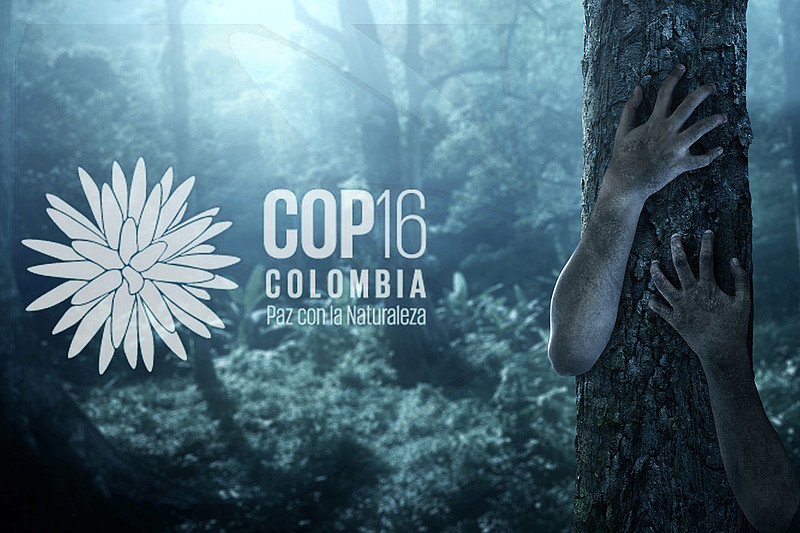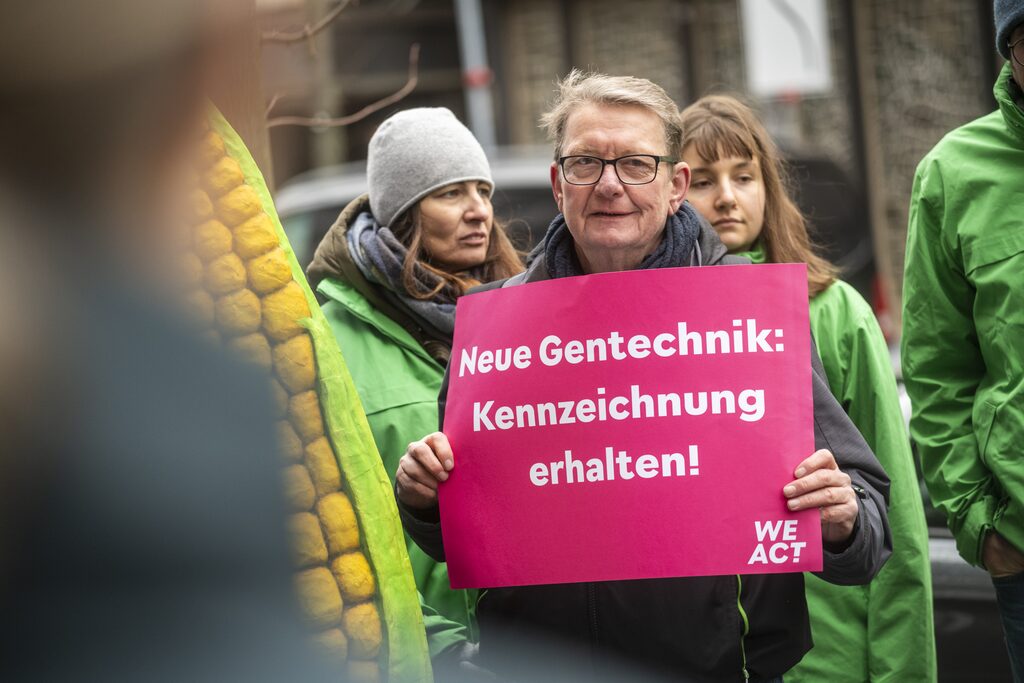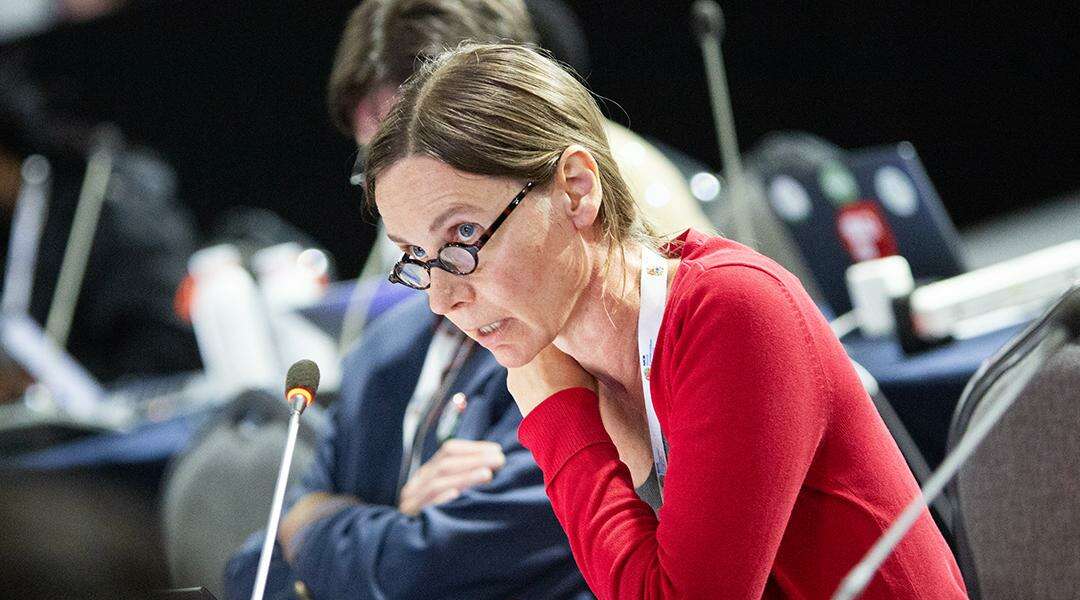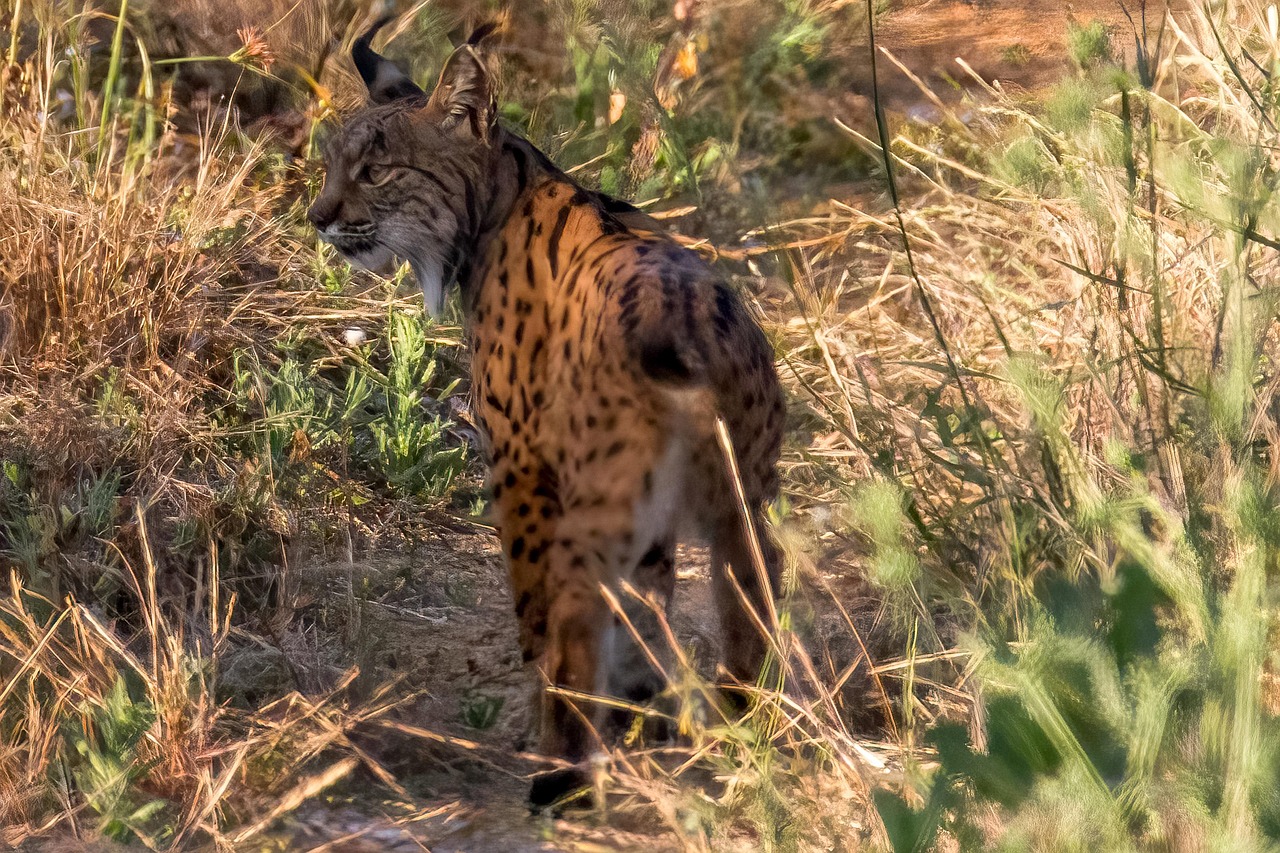Held in the world capital for salsa dancing, the COP was a three-week extravaganza in sweltering heat . “Cali es caliente” we all muttered as we sweated through something between an eco-jamboree, a trade fair and yes, serious diplomatic negotiations. For outsiders to ‘COP culture’, curious to understand how biotech and tech-related agendas played out in Cali, here’s a rough guide to what, sort of, just happened.
By Jim Thomas, Scan the Horizon
Firstly, for the outsiders but also for newcomers (most of the 16,000 people who descended on the so-called “blue zone” where the formal negotiations across the two weeks of the conference take place, were CBD newbies) it’s helpful to recognise that there was not one, but effectively two different ‘spirits’ occupying and animating the Cali COP during this season of spooks and spectres.
CBD Classic
First, there’s ‘good old-fashioned COP’ – the spirit of CBDs past if you like. This spirit embodies the story, values, priorities, agendas and programmes that many of us CBD old-timers know too well.
The original UN CBD, which has been meeting for three decades, came out of the 1992 Rio Earth Summit and was crafted at a time when a few well-informed environmental diplomats were worried about the new threat of GMO crops reducing biodiversity (as well as the bio-piracy of seeds, breeds and indigenous cultures). As a result, the ‘CBD classic’ agenda has the precautionary approach baked into its DNA – along with a sensible preoccupation of scanning for new threats and emerging issues, agreeing on oversight guidelines, supporting biodiverse indigenous cultures and so on.
The CBD classic agenda insists on principles of equity and addressing socio-economic aspects of our ecological crisis. It’s why we have the Cartagena Protocol on Biosafety(that mandates risk assessment for GMOs), the Nagoya Protocol which (rather weakly) tries to address biopiracy and the Nagoya – Kuala Lumpur Supplementary Protocol on Liability and Redress which (even more weakly) states that harm from GMOs should carry liability.
CBD classic mode is where we have seen past moratoria agreed on terminator seeds and geoengineering, risk assessment guidelines, strong statements against GM trees and gene drives and other half-decent multilateral decisions, backed historically by on-the-ground protests.
This legacy agenda trundles on, not only in the biotech items but also in the 8(j) working group, where indigenous communities defend their needs and interests, in areas such as forest protection and marine biodiversity protection and climate change. Since the ‘CBD classic’ never had many goodies on offer for big business, the CBD was previously treated as a policy backwater compared to say the business-friendly climate COPs – even earning the moniker ‘The NGOs’ COP’. Civil society with its moratoria and worthy calls for justice, agroecology, economic and cultural rights and so on had some voice there.
CBD 4.0
But there was a different kind of COP going on in Cali; a Davos-style neoliberal eco-trade fair mixed with norm-setting committees for enabling emerging biodiversity markets and next-generation high-tech gadgets.
‘CBD 4.0’ sums up a new spirit that didn’t just apparate into being around the 2022 Montreal “Summit for Nature” with its high profile KunMing Montreal Global Biodiversity Framework (KMGBF), but was certainly kicked into overdrive at that moment.
From Montreal onwards a gentrifying new crowd of younger, better funded ‘green’ NGOs, financiers and philanthropists seemingly ‘discovered’ the CBD as if moving into a run-down but pleasant neighbourhood they hadn’t noticed before. They condensed around a biodiversity financialisation agenda of ‘nature positive’ biodiversity offsets, 30×30 conservation targets, debt for nature swaps and shiny new digital and genomic technologies (or “innovative solutions” as some prefer to tag them).
The CBD 4.0 agenda brings welcome youth energy but also attracts types who are very interested in numbers – particularly how much money is being pledged for ‘Nature’, which is now a measurable thing like ‘Carbon’.
‘Nature’, under CBD 4.0, is written in bright colours on NGO displays featuring jaguars and indigenous people. The theory of change for CBD 4.0 evangelists is that increasing donations – and something called ‘ambition’ for saving ‘Nature’ – will also get us closer to saving ‘Climate’ via so-called ‘nature-based solutions’. The metric for tracking this salvation is the promised billions of dollars for ‘Conservation’ (mostly fencing off lands) including cash trickling into a new biodiversity fund.
CBD 4.0 believers also hope that a small tax on digital genomic sequences will create a ready windfall for ‘Green Growth’ and ‘Nature’ too. Along the way, new lucrative markets and tech startups in biodiversity monitoring, ecosystem restoration and ‘nature positive’ technologies (managed by energy-gobbling AI) are bubbling up – offering jobs to eager young eco-wonks and, potentially, ‘biodiversity finance’ for business.
This neoliberal crowd, many funded at one remove by Bezos, Gates or similar, are here to talk tech transfer, capacity building for development, targets and financing. Their side events are much more upbeat and excited than the angry attacks on capitalism from the CBD classic crowd.
Conflict and Contrast
So where does global policy on biotech, genetic engineering, synthetic biology and new technologies fit in? In these topics at COP16 we mostly saw a clear struggle at work between the CBD classic agenda and the new CBD 4.0 approach.
For a start, there’s the very classic Cartagena Protocol. With its focus on precaution, risk and regulation, industry and the Davos-esque CBD 4.0 crowd are left cold by it and would rather shuffle this protocol offstage. An intersessional process to establish risk assessment guidelines for gene drives (self-spreading gene-edited organisms) was successfully hijacked by industry scientists who rewrote the original biosafety advice for the protocol along more streamlined (less precautionary) lines.
Those nations who take their orders from biotech and agribusiness interests (a group that goes by the acronym CANJAB – Canada, Australia, New Zealand, Japan, Argentina and Brazil – although UK is in there too) celebrated this weakening of precaution at COP16 and then set up a constrained expert group tasked to suggest other potential ideas for guidance and prevent actual work for another two years. A prior agreement to commission guidelines on risk assessment for GM fish was shelved.
At the same time a more precautionary effort from the Cartagena ‘compliance committee’ launched an attempt to get the Parties to publicly acknowledge that gene-edited crops are, in fact, legally regarded as ‘living modified organisms’ under the protocol and shouldn’t be exempted from regulation. CANJAB weren’t going to allow that (since deregulating gene-edited crops is a major focus for them). Instead, they secured compromise text that put off any further discussion on this inconvenient point for another two years (by which time national and regional gene editing deregulation strategies may have already happened).
DNA – Who owns it, who pays for it?
But it’s in the two remaining big ‘biotech’ topics at COP16 where we saw the struggle between the CBD classic approach and a newer CBD 4.0 agenda really playing out.
Consider DSI (digital sequence information) – that is CBD jargon for digital versions of DNA code stored in their millions in cloud databases or used to train commercial AI models. The CBD classic approach to this issue was called ABS (Access and Benefit Sharing). It had some problems, but at least it was primarily motivated by biopiracy concerns. The Nagoya Protocol insists that when companies bring genetic material (e.g. seeds or DNA) across borders for commercial use they must also agree to pay a benefit to the original stewards.
However, when genes and sequences started being digitised and sent by email instead, that arrangement became outdated – so a new mechanism was needed. Enter CBD 4.0.
Rather than design a way to ensure that digital DNA sequences were tracked to ensure ABS compliance, the neoliberal answer has been to set up a big (probably voluntary) multilateral fund into which digital sequence users (such as pharma, AI and biotech companies) can donate some pennies. That fund will either go to indigenous communities or, in some hybrid manner, be added to the headline ‘money for nature’ figures that CBD 4.0 evangelists are so busy trying to count.
The money might even go towards technology transfer or training in biotech as a ‘non-monetary benefit’.
In Cali, a contact group of hundreds of delegates sat every day for hours – and sometimes all day and night long – to hammer out the details of this new multilateral fund and mechanism. Everybody seems excited that maybe there will be some money in this fund and, in this excitement, the negotiations strayed far from questions of justice or access and benefit sharing to questions of who can avoid filling the fund and who can get in line to get money from it.
Scanning, but not seeing, the horizon
In the agenda item on synthetic biology the conflict has been fiercest.
In the CBD ‘synthetic biology ‘ describes all the new developments in genetic engineering – such as synthetic organisms, gene-editing, gene drives, RNAI sprays and more. Synthetic biology (or synbio) has been a CBD classic topic for 15 years, addressing precaution, regulation and oversight. For all of that time, industry has been trying to kill it off by saying it doesn’t meet technical criteria as a ‘new and emerging issue’ (it does).
Parties established a ground-breaking Horizon-scanning, Assessment and Monitoring process at COP15 in Montreal intended to pinpoint new issues and threats and elevate them for assessment and policy action.
This process was a novel substantiation of the precautionary principle and industry fought tooth and nail to stop it from being established (and lost). Once established, a multidisciplinary expert group worked tirelessly over two years to design the process in detail and then carried out a first round of horizon-scanning and assessment concluding that the CBD needed to look more closely at five areas including artificial intelligence and self-spreading viral vaccines for wildlife.
Rather than implement these recommendations, CANJAB plus the UK entirely denigrated and sidelined the work of this expert group and forced a pivot in the negotiations to the CBD 4.0 agenda.
By introducing a ‘thematic action plan” on capacity building and tech transfer, CANJAB plus the UK crafted an industry promotion package for synthetic biology, positioning biotech as the source of shiny ‘innovative solutions’ (technofixes) that could be matched to the targets of the KMGBF and thereby made eligible for funding.
With eyes squarely on the new funding pots of DSI and the Global Biodiversity Framework Fund (GBF) – which rolled out of the implementation of the KMGBF – the CANJAB crowd brought African and other South governments onside with a general promise of capacity-building monies and the eventual transfer of new synbio technologies for their economies.
Horizon-scanning, assessment and monitoring meanwhile was within a hair’s breadth of the chopping block and CANJAB negotiators even pushed for the formal ‘dis-establishment’ of the Horizon-scanning, Assessment and Monitoring process – an unheard of move.
Luckily, Europe and some African and Central American countries (e.g. Egypt, Guatemala) insisted on protecting remnants of the CBD Classic agenda of precaution and oversight.
As a compromise, another more technical expert group will be convened to once again repeat the exercise of horizon scanning and, again, recommending items for assessment. While the process has been saved – and useful knowledge will likely be generated as a result – there can be no illusion: CANJAB plus the UK will continue to block actual decisions or assessments from here on, every 2 years – all while expanding the synbio industry promotion package.
As they do so, it will increasingly harmonise with bigger economic currents already visible in the ‘blue zone’.
Trick or treat?
While the negotiations were engaging, what was really eyepopping was the speculative technologies and radical financialisation on display in the side events and exhibition booths. A pumped-up presentation by XPRIZE Rainforest (a 5‑year $10m ‘competition’ to enhance understanding of rainforest ecosystems) showcased macho explorer teams with swarms of drones, robots, genomic probes, acoustic samplers and facial recognition cameras deploying full-spectrum real-time AI monitoring and surveillance of indigenous territories in order to secure new biodiversity credits for financial markets.
Gene drive developers pitched engineered rats and snails as new apps in their expanding gene-tech library. Private companies offered to pay communities to scoop up continual soil, water and air samples for genomic sequencing to feed their ‘generative biology’ platforms so they can sell novel AI-generated proteins to Proctor & Gamble .
As Halloween came closer, a ghoulish parade of tech bros, startups, banks, trade groups and other corporate types wearing ‘Nature’ masks continued to offer up ecosystem restoration, biodiversity offsets, e‑DNA and more to dazed country delegates straying deep into unfamiliar techno-utopian territory.
Thankfully at least some, channelling ancestral spirits of CBD classic, still had the will – and the capacity – to ask whether these shiny new Halloween treats that were on offer were, in fact, something altogether more tricky.
Source: A Bigger Conversation






